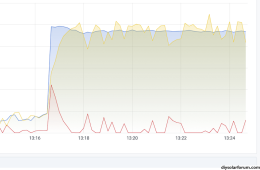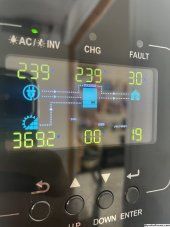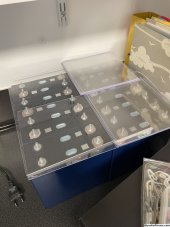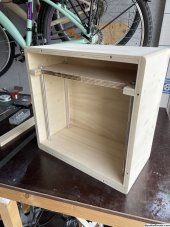Paulfrench35
New Member
Hello, I'm French and I use google translate.
I don't have any battery on the inverter yet.
On this graph the load (blue curve) is 1500w and the solar production (yellow curve) at this moment is approximately 3000w.
Why the yellow curve is at the time heckled ?
Why will the inverter draw power from the grid ? Solar production is far greater than the load !!!

An example, in the pink circle the grid and solar supplies the inverter and in the gray circle I cut the grid.
The load is almost the same. We can clearly see in the second case that it does not need the grid, solar power is more than sufficient.
So why does he take it in?

I don't have any battery on the inverter yet.
On this graph the load (blue curve) is 1500w and the solar production (yellow curve) at this moment is approximately 3000w.
Why the yellow curve is at the time heckled ?
Why will the inverter draw power from the grid ? Solar production is far greater than the load !!!

An example, in the pink circle the grid and solar supplies the inverter and in the gray circle I cut the grid.
The load is almost the same. We can clearly see in the second case that it does not need the grid, solar power is more than sufficient.
So why does he take it in?






